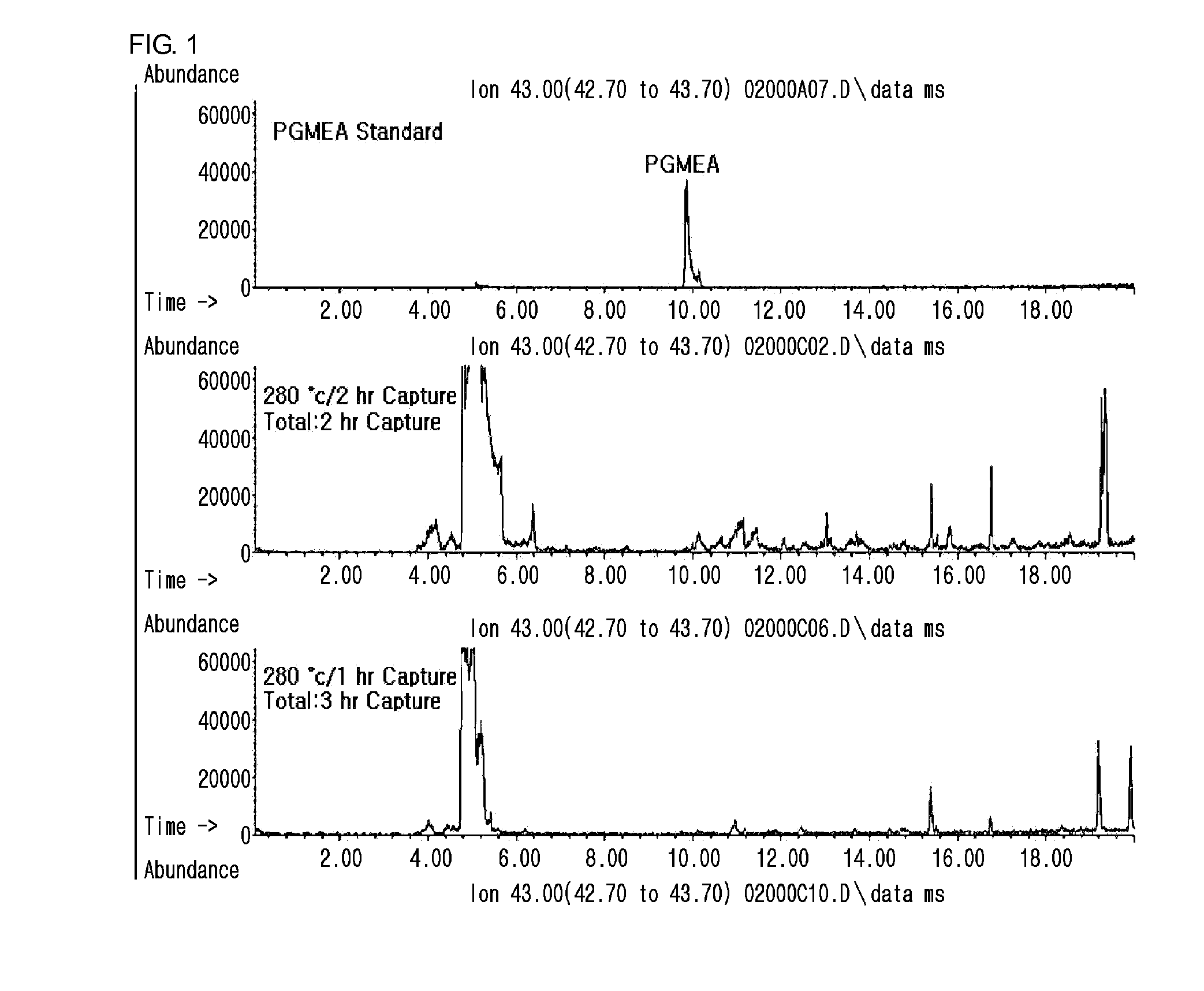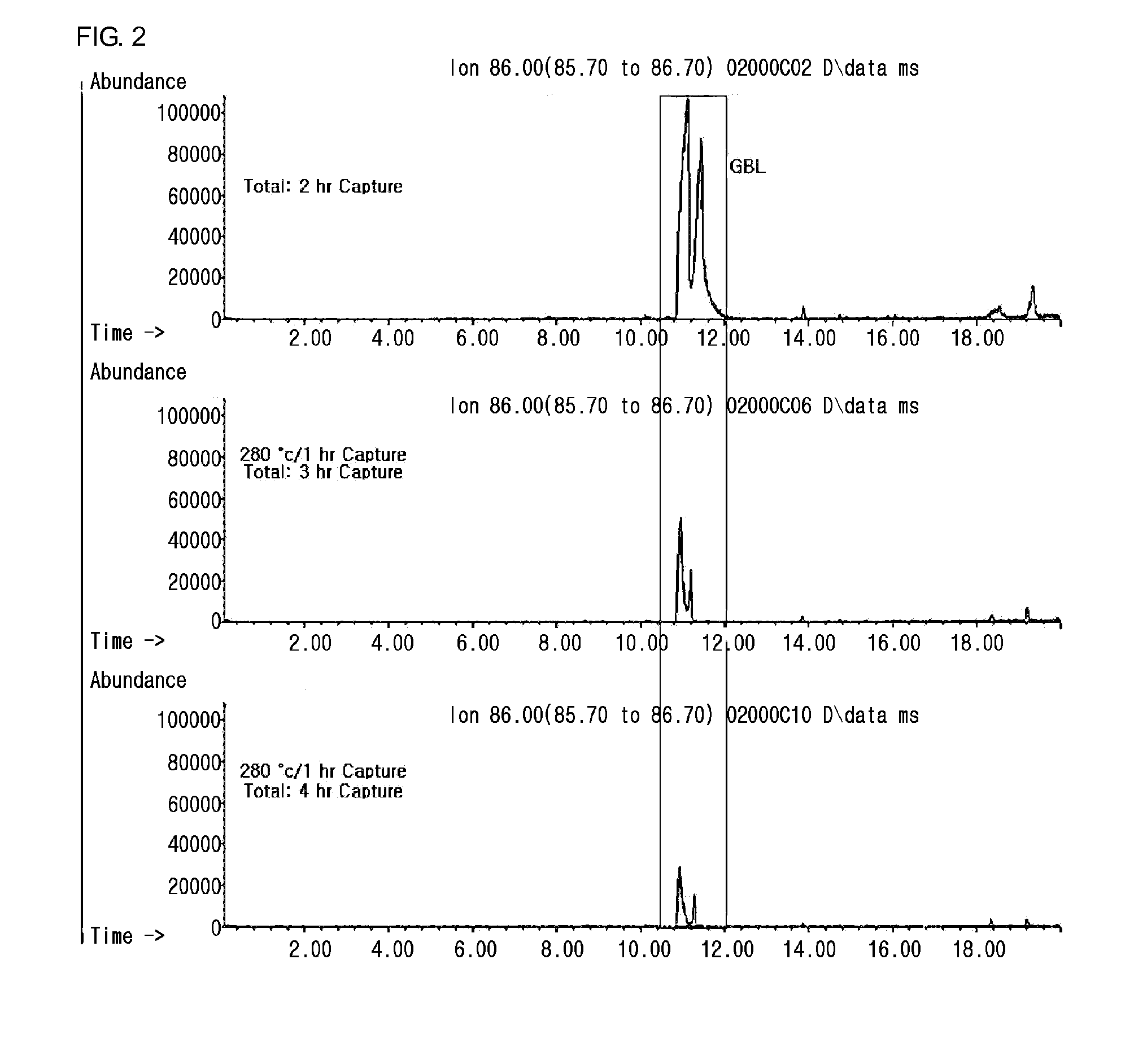Low temperature curable polyimide resin and method of preparing the same
a polyimide resin and low temperature technology, applied in the field of polyimide resins, can solve the problems of inability to completely change into polyimide, inability to use a process vulnerable to heat, etc., and achieve the effects of excellent heat resistance and processibility, and high reactivity
- Summary
- Abstract
- Description
- Claims
- Application Information
AI Technical Summary
Benefits of technology
Problems solved by technology
Method used
Image
Examples
embodiment 1
Example of Low Temperature Polyimide Polymerization
[0082]12.1 g of 2,2-bis(3-amino-4-hydroxyphenyl)hexafluoropropane and 60 g of propyleneglycolmonomethyletheracetate were sequentially put into a 100 ml round bottom flask, which were than slowly stirred so as to be completely dissolved. The flask was water-bathed, and then, 10.2 g of 3,3′,4,4′-diphenylethertetracarboxylic acid dianhydride was slowly added while maintaining the flask at room temperature. 11 g of toluene and 4 g of triethylamine were put into the mixture solution and, in a state in which a dean-stark distillation device was installed to remove water, the mixture solution was refluxed at 150° C. for five hours. The water of the dean-stark distillation device was removed and the resultant mixture solution was additionally refluxed for two hours in order to remove a catalyst, which was then cooled at room temperature to obtain a soluble polyimide solution.
[0083]A polyimide generation peak was checked through IR, and it w...
embodiment 2
Example of Low Temperature Polyimide Polymerization
[0084]12.1 g of 2,2-bis(3-amino-4-hydroxyphenyl)hexafluoropropane and 60 g of propyleneglycolmonomethyletheracetate were sequentially put into a 100 ml round bottom flask, which were than slowly stirred so as to be completely dissolved. The flask was water-bathed, and then, 6.5 g of 1,2,3,4-tetracarbonic acid dianhydride was slowly added while maintaining the flask at room temperature. 11 g of toluene and 4 g of triethylamine were put into the mixture solution and, in a state in which a dean-stark distillation device was installed to remove water, the mixture solution was refluxed at 150° C. for five hours. The water of the dean-stark distillation device was removed and the resultant mixture solution was additionally refluxed for two hours in order to remove a catalyst, which was then cooled at room temperature to obtain a soluble polyimide solution.
[0085]A polyimide generation peak was checked through IR, and it was confirmed that ...
experimental example 1
1. Evaluation of imidization rate
[0089]It was measured by using FT-IR in a case after prebaking at 120° C. for four minutes and in a case after hardbaking at 250° C. for one hour.[0090]An imidization rate of each case was checked through a CN band integration value of a test sample cured at respective curing conditions on the assumption that a CN band integration value of a test sample cured at 300° C. for one hour is a 100% conversion rate.
TABLE 1After prebakingAfter hardbakingat 120° C.at 250° C.for four minutesfor one hourEmbodiment 1100%100%Embodiment 298%98%Comparative98%98%Example 1Comparative0%0%Example 1
[0091]According to the results as shown in Table 1, it is noted that Embodiments 1 and 2 according to the present invention in which the polyimide resin was directly prepared at a low temperature have the same or superior imidization rate compared with the Comparative Example 1 in which the polyimide resin was prepared at a high temperature.
2. Analysis of Remaining Amount of ...
PUM
| Property | Measurement | Unit |
|---|---|---|
| Temperature | aaaaa | aaaaa |
| Temperature | aaaaa | aaaaa |
| Temperature | aaaaa | aaaaa |
Abstract
Description
Claims
Application Information
 Login to View More
Login to View More - R&D
- Intellectual Property
- Life Sciences
- Materials
- Tech Scout
- Unparalleled Data Quality
- Higher Quality Content
- 60% Fewer Hallucinations
Browse by: Latest US Patents, China's latest patents, Technical Efficacy Thesaurus, Application Domain, Technology Topic, Popular Technical Reports.
© 2025 PatSnap. All rights reserved.Legal|Privacy policy|Modern Slavery Act Transparency Statement|Sitemap|About US| Contact US: help@patsnap.com



